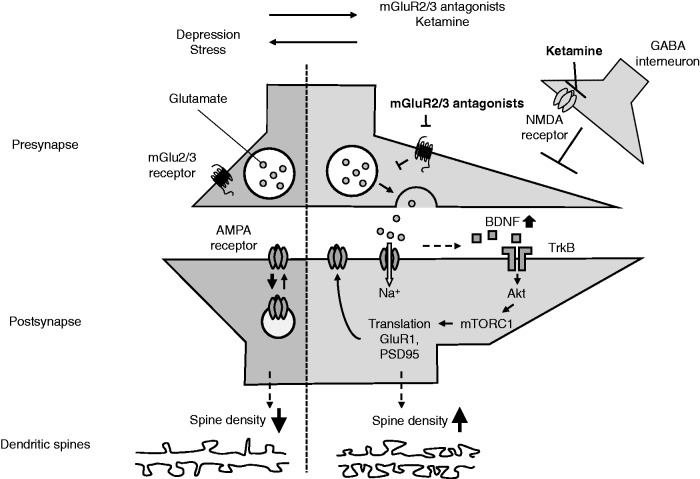Figure 1.
Synaptic mechanisms underlying the antidepressant effects of mGlu2/3 receptor antagonists. mGlu2/3 receptor antagonists, which act via the blockade of perisynaptic autoreceptors, increase glutamate release into the synaptic craft and stimulate postsynaptic AMPA receptors, while ketamine is proposed to increase glutamate release by disinhibition of GABA interneurons. Stimulation of the AMPA receptor increases BDNF synthesis or secretion, which subsequently activates TrkB receptor signaling. The activation of TrkB signaling then activates AKT/mTORC1 signaling, leading to an increase in the synthesis of synaptic proteins, such as GluR1 and PSD95. The increased expression of GluR1 (and its insertion into the membrane) is also necessary for mGlu2/3 receptor antagonists to exert sustained antidepressant effects. In a depressed state, it is hypothesized that these pathways are disrupted, which eventually reduces the dendritic spine density. mGlu2/3 receptor antagonists reverse these spine deficits by allowing the disrupted pathways to resume. AMPA: α-amino-3-hydroxy-5-methyl-4-isoxazolepropionic acid; NMDA: N-methyl-D-aspartate; GABA: gamma-aminobutyric acid; BDNF: brain-derived neurotrophic factor.

